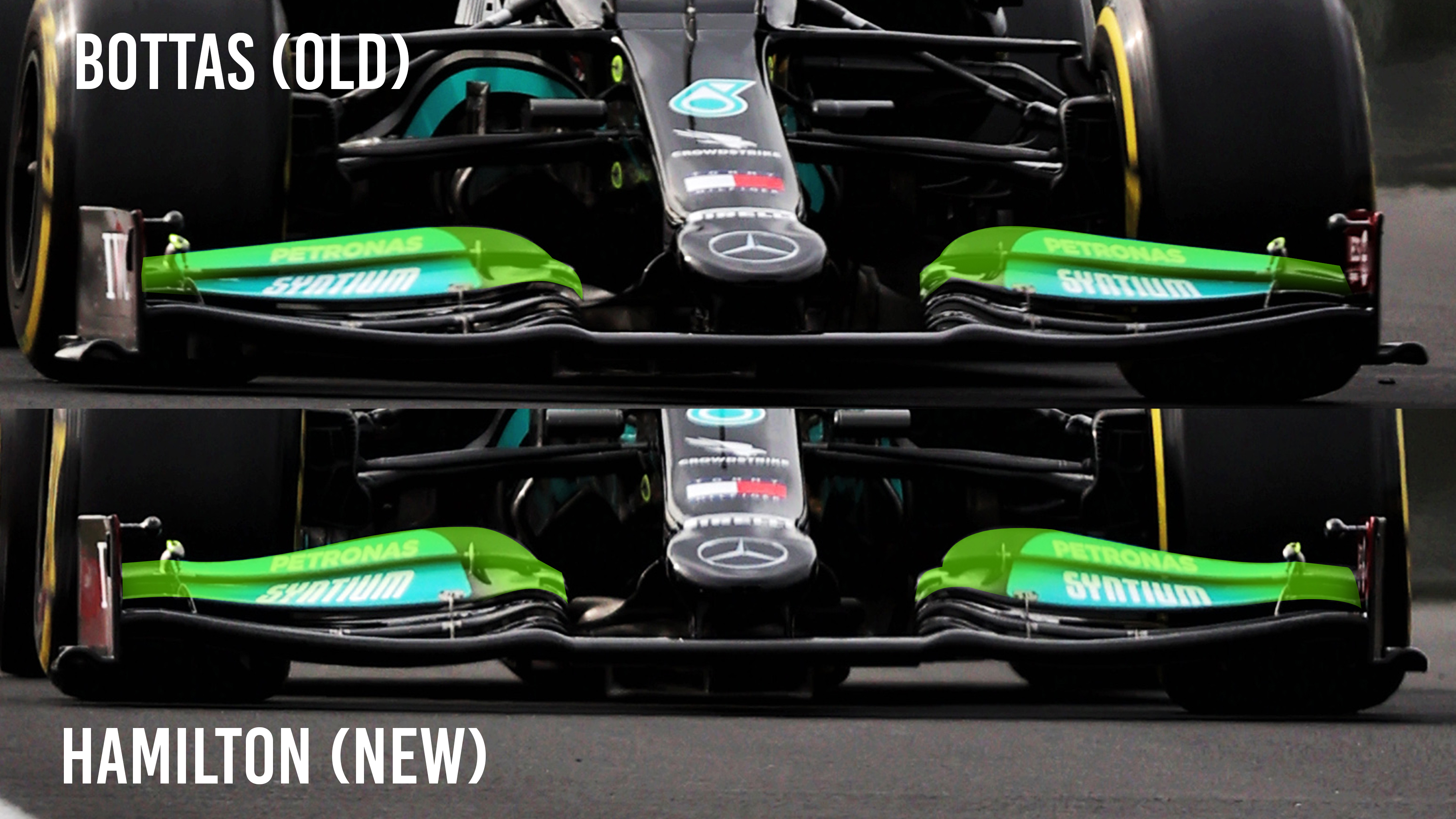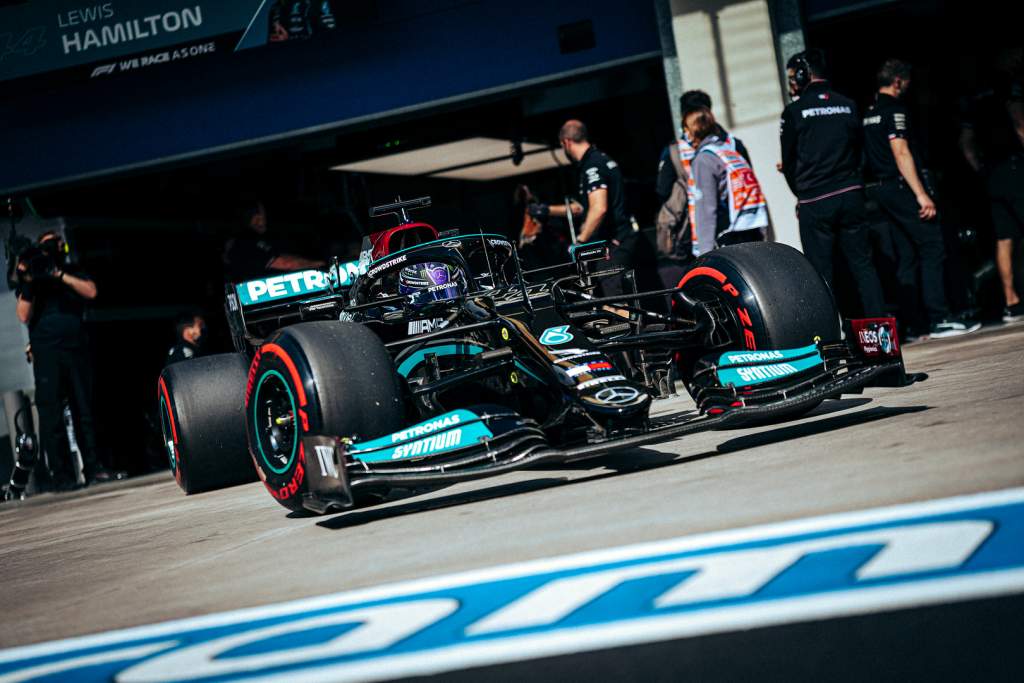Up Next

Mercedes trialled a modified front wing during Formula 1 practice in Turkey, one of several occasions we have seen this as-yet-unraced part since the August summer break.
The team has yet to make a decision on whether it will be raced given previous tests have been disrupted by reliability and conditions, but it’s clearly being evaluated for use over the rest of the weekend.
I’m pretty sure that everyone would have headed off to Turkey carrying fairly high downforce set-ups. Last year, the track was initially so slippery it was almost impossible to do a lap without going off – and that was before the rain arrived.
But with lap times 4-5 seconds quicker than last year, I’m sure that there will be a little bit of trimming-out going on before FP3. Certainly, plenty of teams were going in that direction during Friday’s running on a track surface that’s now relatively high-grip thanks to having time to settle following last year’s resurfacing and being water blasted.
But in that context, it’s interesting how Mercedes has gone about increasing its downforce levels. The rear wing is simply about bolting on one from the various versions it has available for different circuits that produces more downforce. But it’s how you go about balancing that with the front wing that dictates the overall benefit.

It’s fairly easy to just add on more flap angle, but if you do that you can easily lose that extra load you are trying to find and simply end up with just carrying the extra drag from the rear wing.
All the downstream aerodynamic components are optimised around a certain airflow coming off the trailing edge of the front wing flaps.
A small change in this airflow can very easily disturb some of the vortices that work in conjunction with each other and damage the performance of the underfloor, especially the front corner area where this season each team has been working hard to get more performance out of it to compensate for the regulation changes to the sides of the underfloor.
To achieve the balance Mercedes requires, it has gone in the direction of how Red Bull goes about it.
It’s a very simple change to the trailing edge of the upper flap in front of the front tyre. It now has a little more curvature in it as it goes outwards towards the endplate. It’s subtle, but it’s there.
The overall shape is a bit more like the Aston Martin solution, which it has been running for some time.
By increasing the load in this area of the wing, it means that you are not interfering with the airflow going between the front. This should mean that the rest of the downforce-producing components are not affected.





